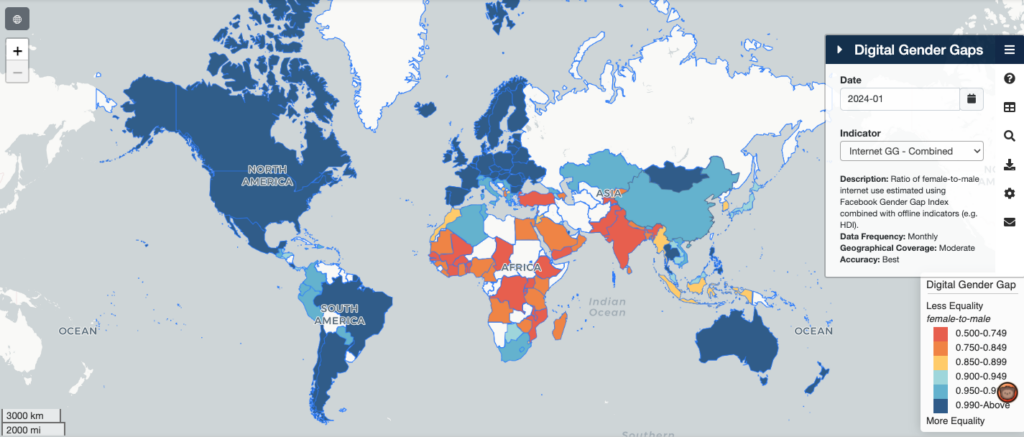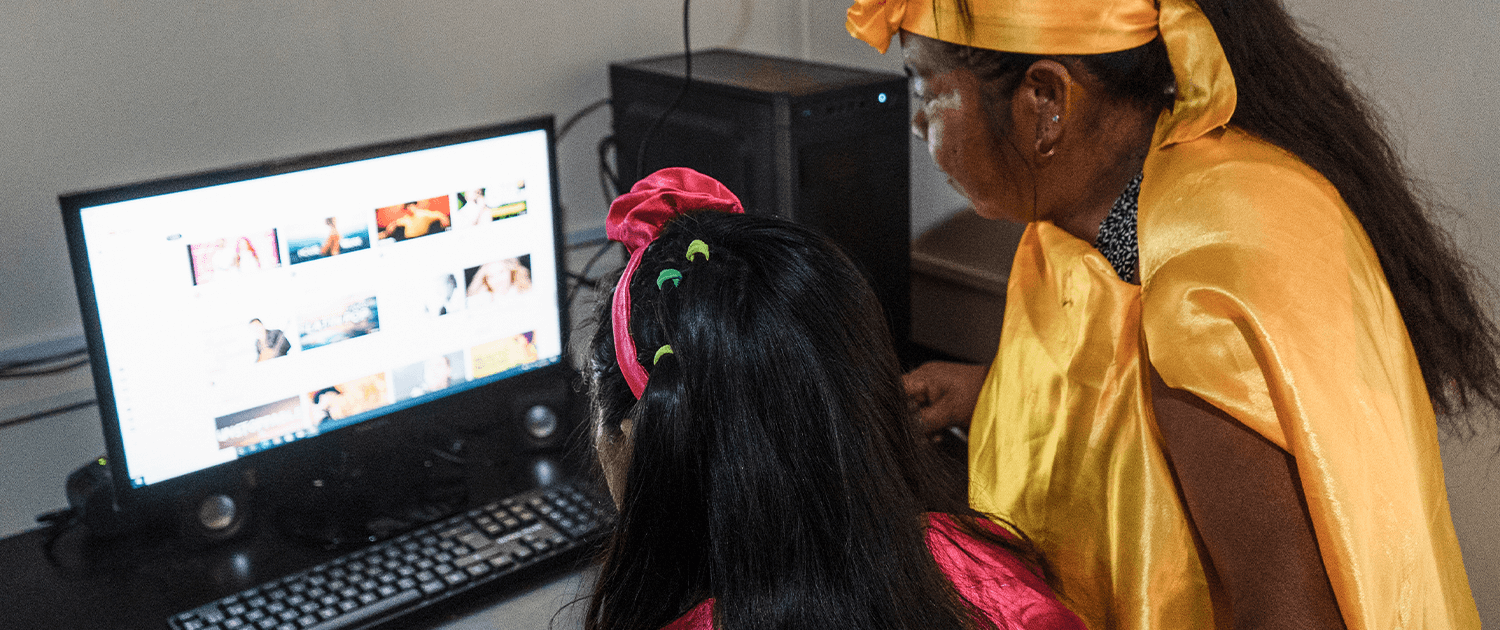Measuring demographic Internet usage has become essential for governments to plan for and carry out the United Nations’ Sustainable Development Goals (SDGs), particularly SDG 5, which aims to achieve gender equality and empower all women and girls.
According to recent figures by the International Telecommunication Union (ITU), 2.6 billion people are unconnected, the majority of whom are females living in low-income (LICs) and lower-middle-income countries (LMICs) (Figure 1).
Figure 1 — Percentage of female and male population using the Internet, 2023. Source: ITU.
Studies show that the reasons for this disparity are largely the effects of established and cultural norms. For example, once the differences in education and employment status between men and women are (statistically) accounted for, being a woman in Myanmar reduces an individual’s odds of owning a mobile phone by 42%.
While mobile phone usage doesn’t directly correlate with Internet usage — globally, 78% of people aged 10 and over owned a mobile phone in 2023 — it is a good gauge to determine the adoption of the Internet, particularly in LICs and LMICs where mobile devices are the primary/most affordable means to access the Internet. Currently, 900 million women across LICs and LMICs are predicted not to be connected to mobile broadband.
Figure 2 — The graph shows the evolution of the mobile gender gap from 2017 to 2022, including the proportion of women who use mobile Internet and the gender gap in mobile Internet. Notes: Based on survey results from over 13,800 face-to-face surveys across 12 low- and middle-income countries and modeled data for adults aged 18+. Source: GSMA Intelligence, 2022.
Organizations like the GSMA, ITU, and OECD have collected data on these high-level metrics for several years. However, this data’s breadth, regularity, and granularity are not the same as other key metrics associated with gender equality, such as education and labor force participation. This makes it challenging to create and measure the effect of evidence-based policies and strategies to address the gap.
Closing the Gap Through Data
Some governments, researchers, and civil society groups have taken it upon themselves to fill these gaps through localized quantitative and qualitative data to form a baseline and measure the success of measures to improve key metrics.
One collective, comprising the Web Foundation, A4AI, GSMA, and the Association for Progressive Communications, developed a Toolkit for researching women’s Internet access and use, which guides research involving women, providing qualitative and quantitative example questions across various research topics. Efforts like these are constructive in overcoming the challenges of establishing consistency to enable multi-country/regional and global analysis.
There have also been efforts to tap into non-traditional census measuring methods, most notably by the team behind Digital Gender Gaps, which collates open data sources, much like Pulse, and social media advertising data, to provide a close to real-time view of gender equality. Further, social media advertising data allows this initiative to measure girls’ Internet and mobile usage (aged 13 to 17), which have yet to be accounted for in other global measuring efforts.

Global Internet, Opportunity for All
A key action of the Internet Society is bringing the Internet to those who need it, regardless of location and demographic. This involves increasing the capacity of underserved communities to establish and maintain networks that will bridge the digital divide.
Read: The Women Behind the Internet
We have joined Partner2Connect to amplify our impact, pledging to train 10,000 people and to sustain and build 100 networks by 2025. Together, we can get even closer to achieving universal connectivity and digital transformation.
Photo: © Gustavo Castellanos Echazú


